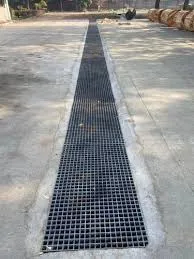
-
 Afrikaans
Afrikaans -
 Albanian
Albanian -
 Amharic
Amharic -
 Arabic
Arabic -
 Armenian
Armenian -
 Azerbaijani
Azerbaijani -
 Basque
Basque -
 Belarusian
Belarusian -
 Bengali
Bengali -
 Bosnian
Bosnian -
 Bulgarian
Bulgarian -
 Catalan
Catalan -
 Cebuano
Cebuano -
 China
China -
 China (Taiwan)
China (Taiwan) -
 Corsican
Corsican -
 Croatian
Croatian -
 Czech
Czech -
 Danish
Danish -
 Dutch
Dutch -
 English
English -
 Esperanto
Esperanto -
 Estonian
Estonian -
 Finnish
Finnish -
 French
French -
 Frisian
Frisian -
 Galician
Galician -
 Georgian
Georgian -
 German
German -
 Greek
Greek -
 Gujarati
Gujarati -
 Haitian Creole
Haitian Creole -
 hausa
hausa -
 hawaiian
hawaiian -
 Hebrew
Hebrew -
 Hindi
Hindi -
 Miao
Miao -
 Hungarian
Hungarian -
 Icelandic
Icelandic -
 igbo
igbo -
 Indonesian
Indonesian -
 irish
irish -
 Italian
Italian -
 Japanese
Japanese -
 Javanese
Javanese -
 Kannada
Kannada -
 kazakh
kazakh -
 Khmer
Khmer -
 Rwandese
Rwandese -
 Korean
Korean -
 Kurdish
Kurdish -
 Kyrgyz
Kyrgyz -
 Lao
Lao -
 Latin
Latin -
 Latvian
Latvian -
 Lithuanian
Lithuanian -
 Luxembourgish
Luxembourgish -
 Macedonian
Macedonian -
 Malgashi
Malgashi -
 Malay
Malay -
 Malayalam
Malayalam -
 Maltese
Maltese -
 Maori
Maori -
 Marathi
Marathi -
 Mongolian
Mongolian -
 Myanmar
Myanmar -
 Nepali
Nepali -
 Norwegian
Norwegian -
 Norwegian
Norwegian -
 Occitan
Occitan -
 Pashto
Pashto -
 Persian
Persian -
 Polish
Polish -
 Portuguese
Portuguese -
 Punjabi
Punjabi -
 Romanian
Romanian -
 Russian
Russian -
 Samoan
Samoan -
 Scottish Gaelic
Scottish Gaelic -
 Serbian
Serbian -
 Sesotho
Sesotho -
 Shona
Shona -
 Sindhi
Sindhi -
 Sinhala
Sinhala -
 Slovak
Slovak -
 Slovenian
Slovenian -
 Somali
Somali -
 Spanish
Spanish -
 Sundanese
Sundanese -
 Swahili
Swahili -
 Swedish
Swedish -
 Tagalog
Tagalog -
 Tajik
Tajik -
 Tamil
Tamil -
 Tatar
Tatar -
 Telugu
Telugu -
 Thai
Thai -
 Turkish
Turkish -
 Turkmen
Turkmen -
 Ukrainian
Ukrainian -
 Urdu
Urdu -
 Uighur
Uighur -
 Uzbek
Uzbek -
 Vietnamese
Vietnamese -
 Welsh
Welsh -
 Bantu
Bantu -
 Yiddish
Yiddish -
 Yoruba
Yoruba -
 Zulu
Zulu
pvc frp pipe
Understanding PVC and FRP Pipes Advantages and Applications
Piping systems are critical components in various industries, including construction, plumbing, and manufacturing. Among the myriad of materials available for piping, two stand out for their unique properties and versatility Polyvinyl Chloride (PVC) and Fiber-Reinforced Plastic (FRP). This article explores the characteristics, advantages, and common applications of PVC and FRP pipes.
What are PVC Pipes?
PVC, or Polyvinyl Chloride, is a widely used synthetic plastic polymer. PVC pipes are made from the extruded polymer and are known for their lightweight nature, durability, and resistance to corrosion. They are a popular choice for both residential and commercial plumbing applications. PVC pipes come in various diameters and wall thicknesses, making them suitable for a wide range of applications, from drainage systems to water supply lines.
Advantages of PVC Pipes
1. Corrosion Resistance Unlike traditional metal pipes, PVC is resistant to rust and corrosion, which significantly extends its lifespan and reduces maintenance costs.
2. Chemical Resistance PVC pipes can withstand a variety of chemicals, making them ideal for transporting chemicals in industrial settings.
3. Cost-Effective The manufacturing process for PVC is relatively inexpensive, and its lightweight nature reduces transportation and installation costs.
4. Ease of Installation PVC pipes are easy to cut and join, which speeds up the installation process and reduces labor costs.
5. Non-Toxic PVC is safe for potable water applications, provided it meets the regulatory standards set by agencies such as the Environmental Protection Agency (EPA) in the United States.
What are FRP Pipes?
Fiber-Reinforced Plastic (FRP) pipes are composite materials made from a polymer matrix reinforced with fibers, typically glass or carbon. These pipes are known for their exceptional strength-to-weight ratio, flexibility, and resistance to corrosive environments. FRP is often used in applications where traditional materials would fail due to chemical exposure or extreme conditions.
pvc frp pipe

Advantages of FRP Pipes
1. High Strength The reinforcement fibers provide FRP pipes with a high strength-to-weight ratio, making them suitable for applications that require resistance to high pressures.
2. Corrosion Resistance Similar to PVC, FRP pipes are highly resistant to chemical corrosiveness, making them ideal for wastewater treatment, chemical processing, and other harsh environments.
3. Lightweight FRP pipes are lightweight, which simplifies handling, transportation, and installation, similar to PVC.
4. Thermal Insulation These pipes can provide better thermal insulation compared to metal pipes, helping to maintain the temperature of the transported fluids.
5. Longevity The durability and resistance to various environmental factors mean that FRP pipes often have a longer operational life compared to other materials.
Key Differences Between PVC and FRP Pipes
While both PVC and FRP pipes offer excellent corrosion resistance and lightweight properties, they serve different applications based on their material characteristics. PVC is usually preferred for lower-pressure applications, such as residential plumbing and irrigation systems. Its cost-effectiveness makes it a popular choice for budget-conscious projects.
On the other hand, FRP pipes excel in high-pressure, high-temperature environments. Their strength and flexibility make them suitable for industrial applications, including oil and gas pipelines, chemical processing plants, and even marine environments.
Conclusion
Both PVC and FRP pipes offer numerous advantages that make them suitable for specific applications across various industries. The choice between the two should be based on the specific requirements of the project, including pressure, chemical exposure, and temperature tolerances. Understanding the properties and benefits of PVC and FRP can help engineers, project managers, and contractors make informed decisions that enhance the longevity and efficiency of piping systems. As industries continue to evolve and demand efficient and sustainable solutions, the role of these materials in piping architecture will undoubtedly remain significant.









